Groups of engaged students walked around with scripts, enthusiastically recording interviews with animals at the Vancouver Aquarium while intrigued parents and students from other schools looked on, trying to understand what was happening. After our careful planning in November, it was exciting to see the project come to life.
Aquarium Objectives 📋
Before the field trip, Regi provided her students with workbooks outlining their main objectives at the Aquarium:
- Follow Your Shot List 🎥 - Bring your shot list and use it as a guide to capture the videos and photos you need for your project.
- Sit and Observe 👀 - Spend time quietly watching your animal. Notice its movements, behaviors, and surroundings. Imagine what it might say if it could talk.
- Ask Questions 🤔- If you have questions, ask staff or volunteers, or look for answers in the exhibit information.
- Record Your Thoughts 📝 - Write down your observations, questions, and ideas in your workbook. Highlight anything you want to research further later.
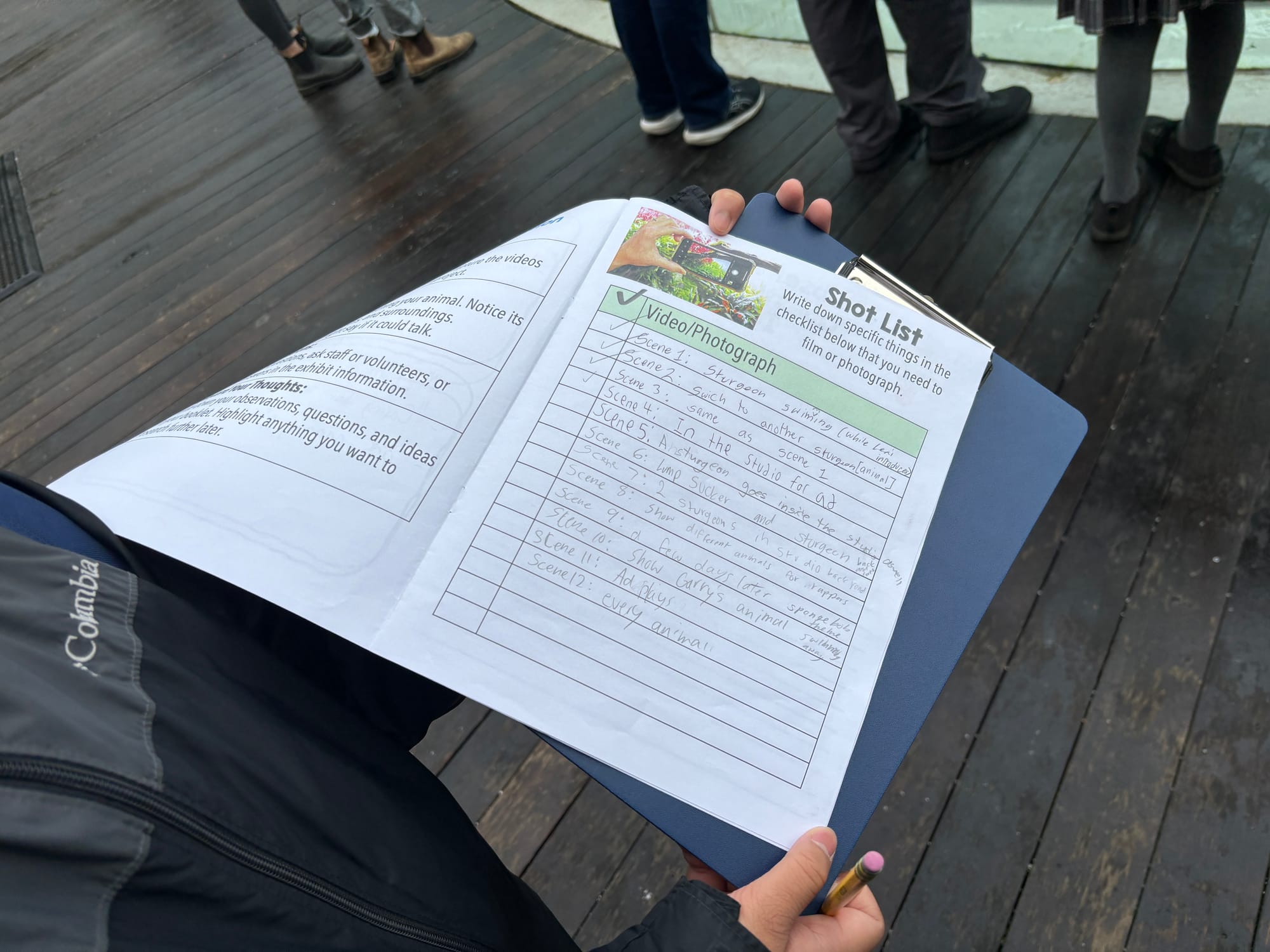
So by the time the big day arrived, each group had already chosen their own animal, reviewed their objectives, and created a game plan to ensure they captured all the footage they needed. Packed with their iPads, microphones, and headphones, everyone was ready to go.
There were probably 3 or 4 other school groups at the Aquarium that day, but I can tell you that the students we were working with stuck out in a very good way. What a cool sight it was to see kids roving around holding props and microphones, recording each other talking with iPads, interviewing staff members, and capturing footage of the animals. Even the staff was awestruck!
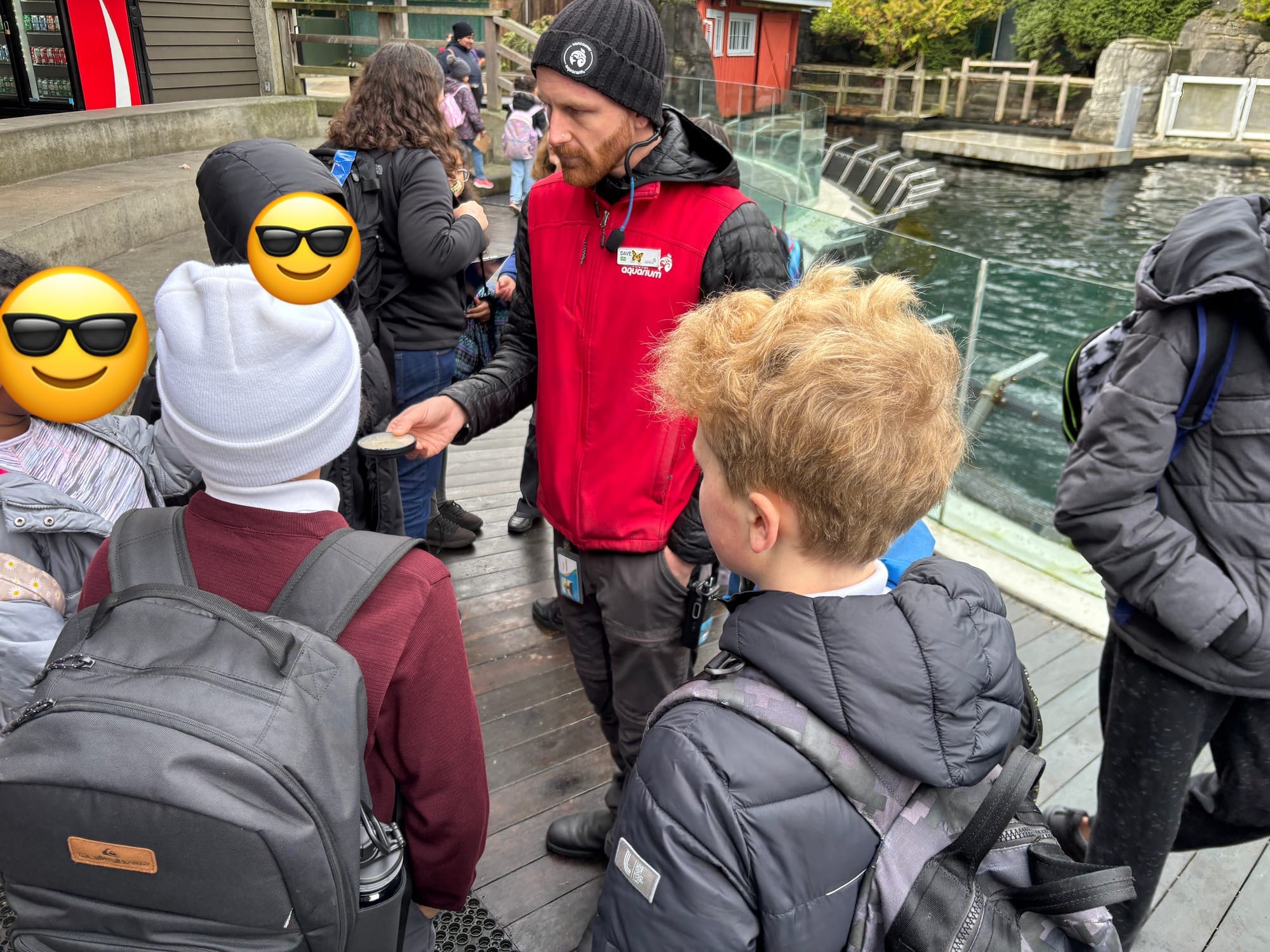
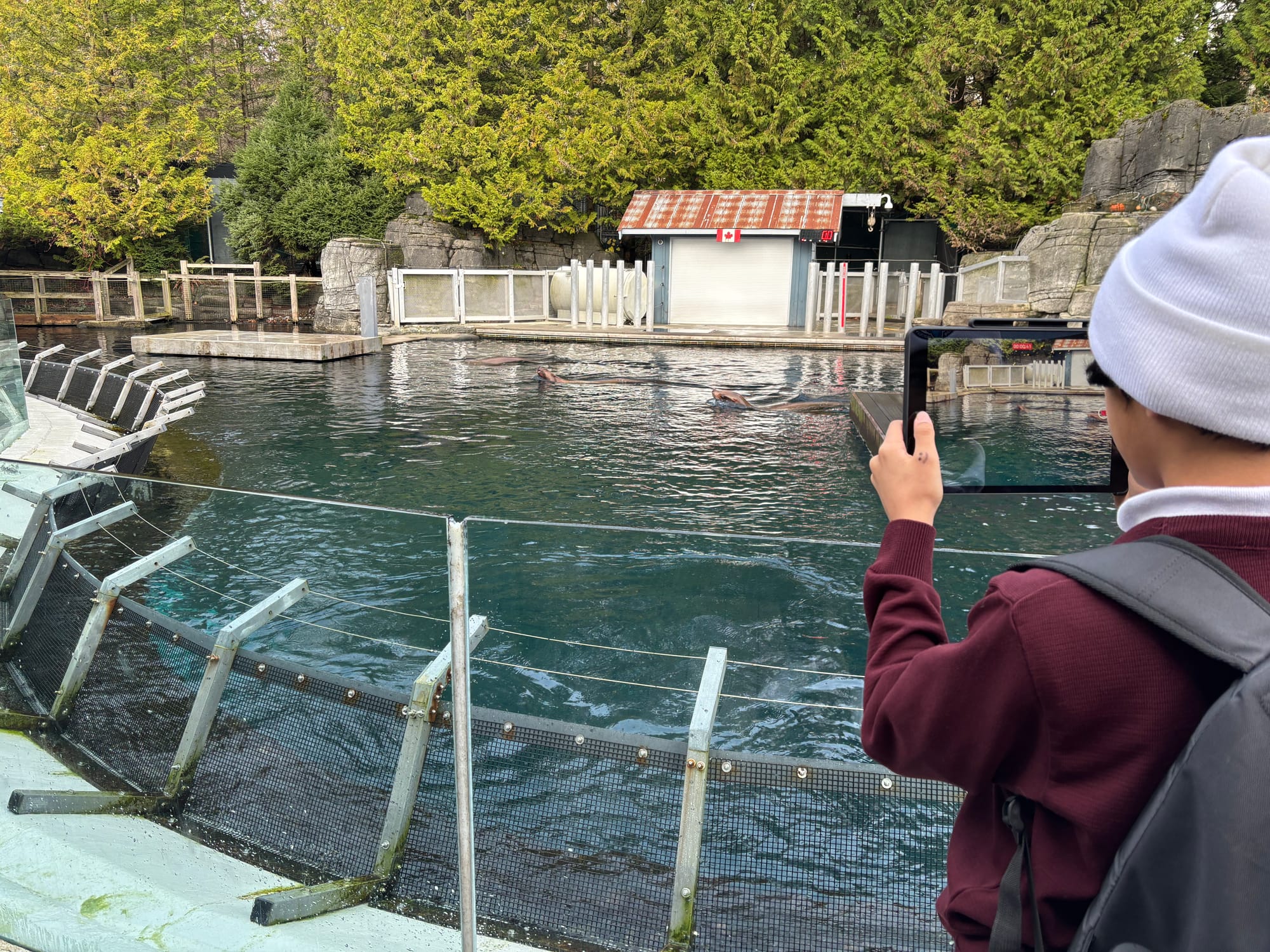
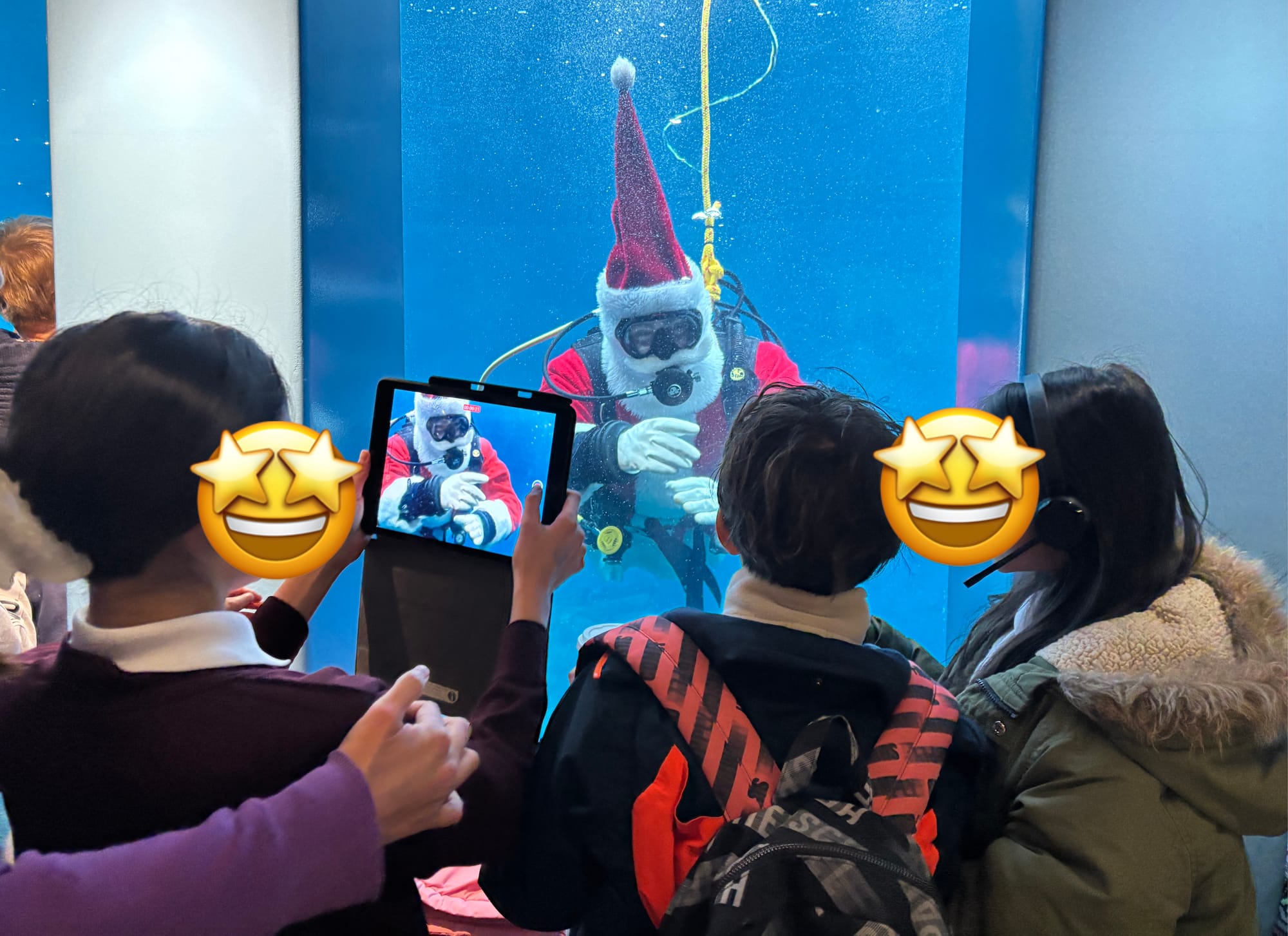
We explored all parts of the aquarium.
Finding their Rhythm 🥁
If you’re worried about the technology being a distraction on a field trip, rest assured that with a focused goal and proper in-class preparation, students can manage pretty well. One group spent the morning working through disagreements about their recording plan. Though personalities and opinions initially clashed, they found their rhythm as the day progressed. By afternoon, they had focused their attention on the stellar sea lion for their news report and showed incredible passion while capturing their footage. Sometimes engagement can look chaotic — and that’s okay!
During the afternoon, a staff member who remembered me from November stopped to help the group interviewing the stellar sea lion. She was super interested in what we were doing and ended up helping the group answer a few questions for their project. There was definitely a reciprocal effect of the staff member showing interest in their work. With her as an authentic audience, the students embraced the opportunity to impress and were laser focused on recording their footage. They even conducted an impromptu interview with her!
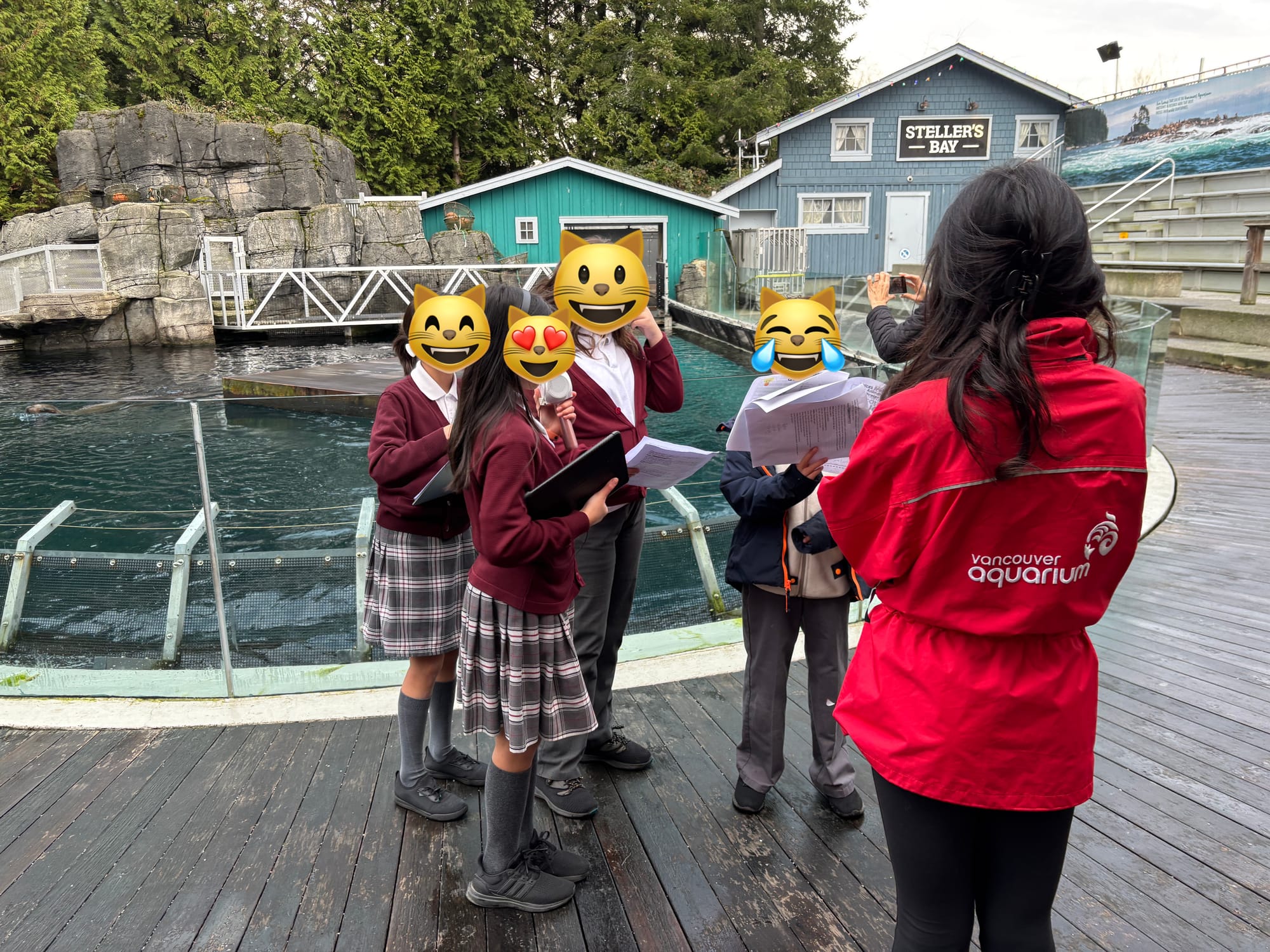
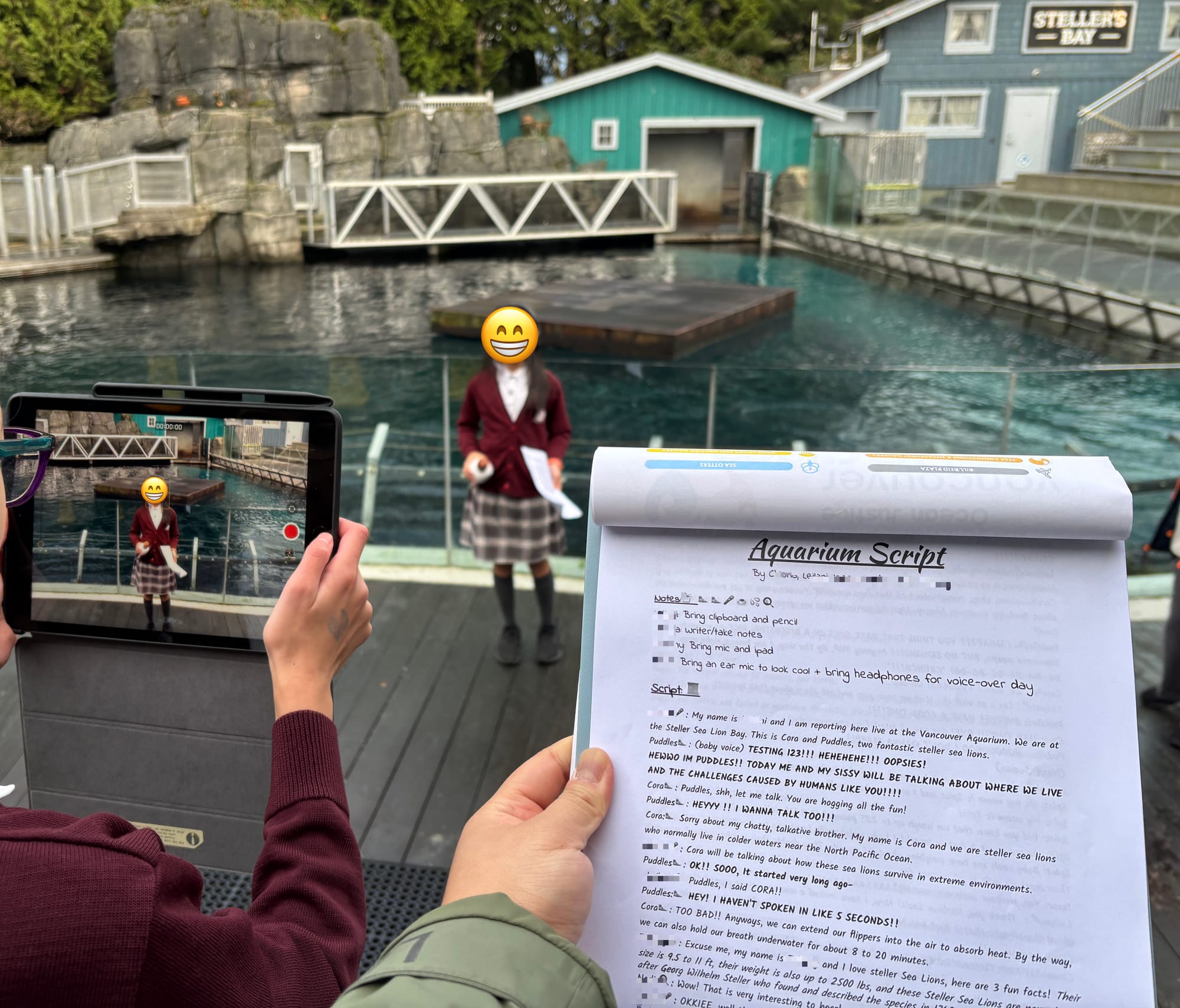
Asking Questions and Shooting their Footage
When planning this, we were a bit worried some animals would be in hiding when the students went to get their footage, but to my surprise all the creatures showed up for their interviews! 😆 Even the group who chose to highlight the axolotl (a notoriously shy amphibian), happened to see the aquarium staff feeding it, and captured some excellent footage.
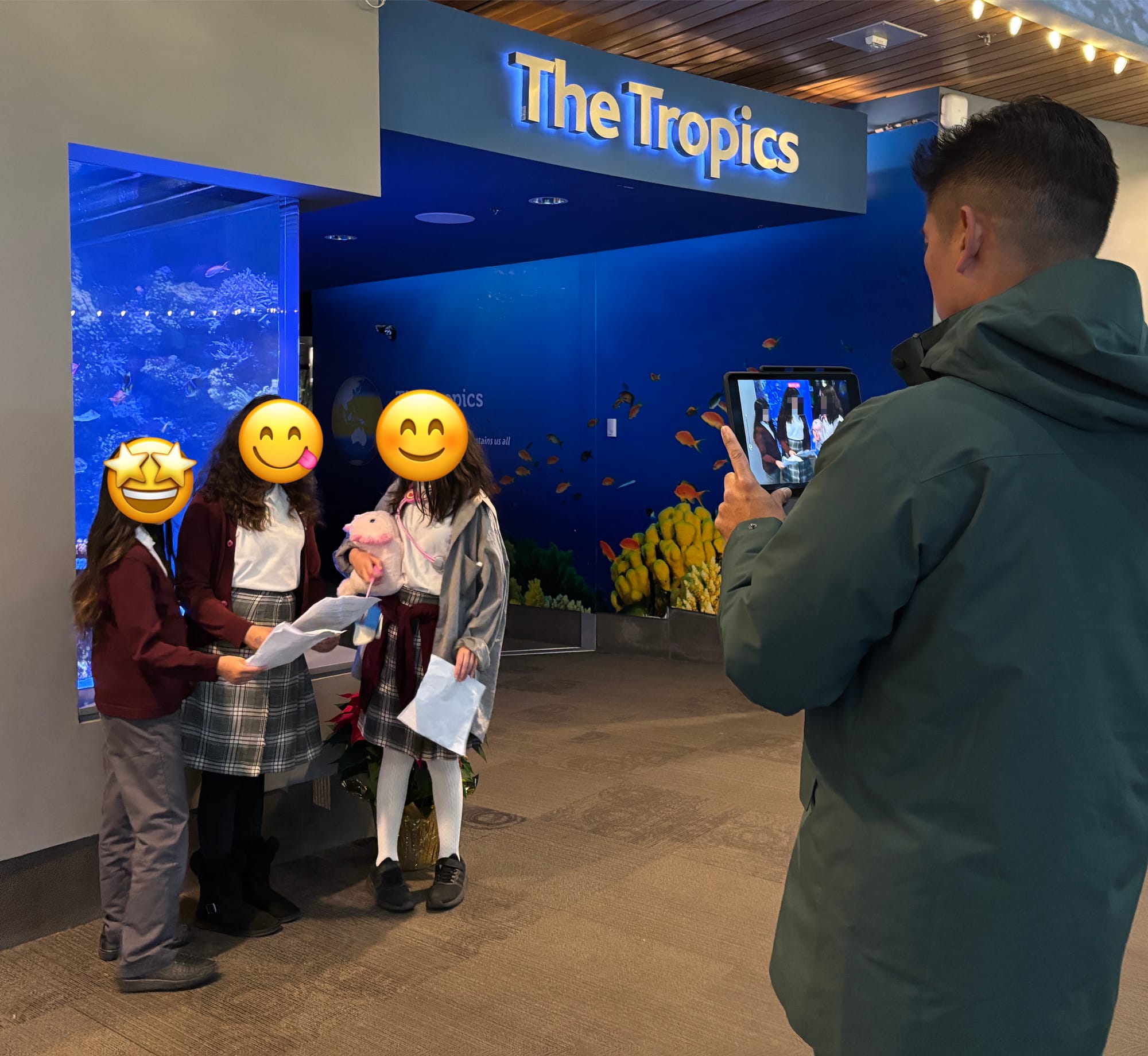
With all our footage captured and field notes complete, we returned to school ready to begin the next phase, production!
Putting it all together 🎞️
Back in the classroom a few days later, we began transforming their raw footage into polished productions. Regi outlined the goals for the multimedia portion of the project:
The class started their productions and edits in Canva, a tool that they were already familiar with. Once they’ve completed their projects, I’ll send them along to some friends of ours, who are marine biologists, for feedback and further inspiration! I can’t wait to share some of the results here as well.
Trust the Process
This project is a great example of how the students benefit from the way Regi runs her class. While some deadlines are unavoidable, like being prepared for the field trip, Regi understands that authentic learning takes time. By allowing flexible deadlines for the final products, she ensures students can fully develop their ideas and maintain their enthusiasm throughout the creative process.
Because why force students to rush to finish when they feel passionate about their work? Like the stellar sea lion, it’s often by moving with patience and purpose that we make the biggest splash. 🦭
Can’t make it to the Aquarium?
You can dive into the wonders of BC’s coast right from your classroom with this immersive 360º video. This virtual experience was created by SeaproofTV, a BC company dedicated to showcasing the beauty and importance of marine ecosystems.

